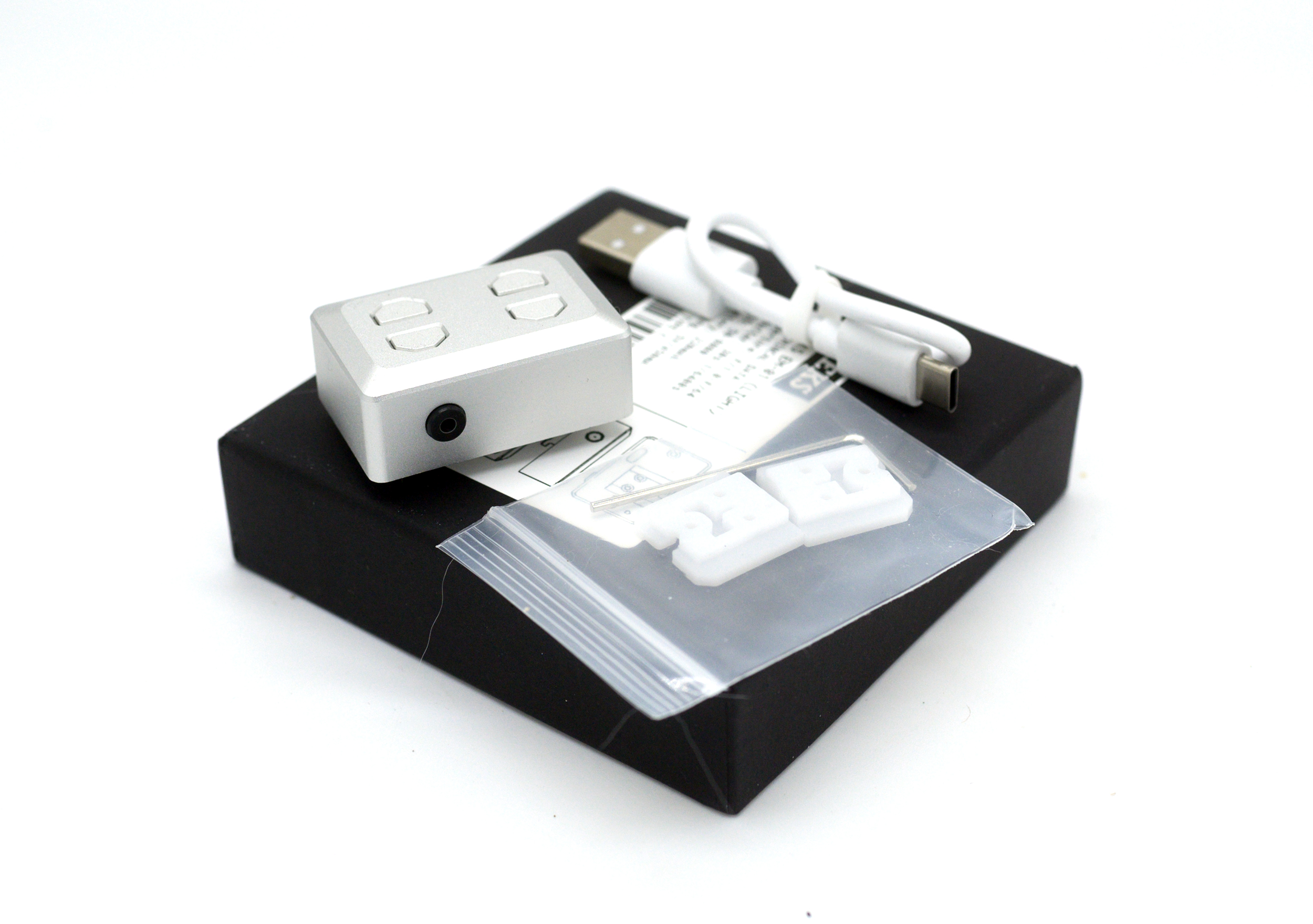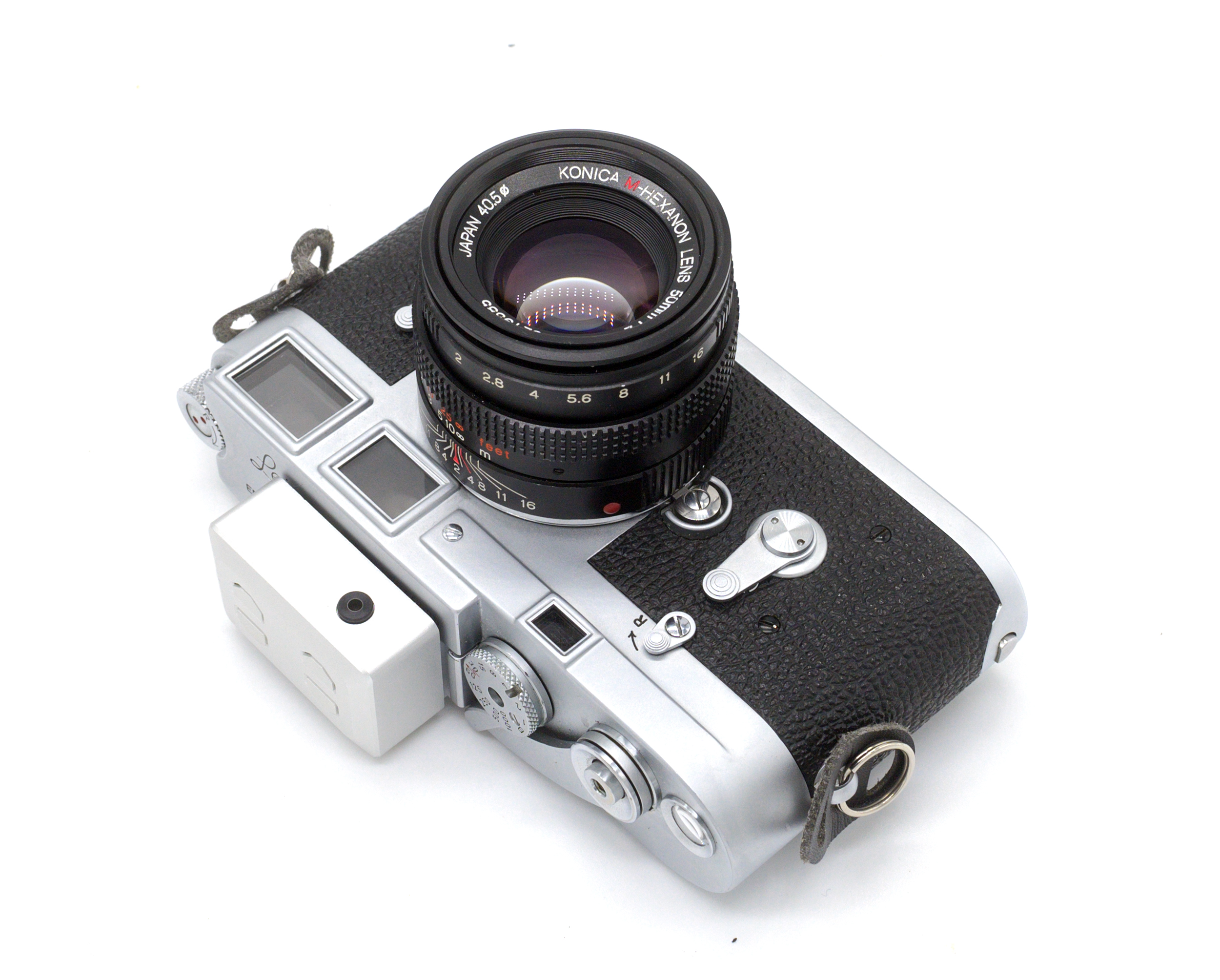
Ca va sans dire that the accurate metering and exposure of a subject is essential for photography. Some photographers swear allegiance to the “Sunny 16 Rule” — and will let you know that they do whenever the subject comes up. Others will say that incident light meters provide the most accurate readings. For most others, the convenience and peace of mind that comes with an electronic light meter reading are essential. Currently (January 2021) coming in about $140 shipped to the USA (if bought directly from Taiwan), will the new Keks EM01 shoe-mount light meter finally encourage you to pull that old meterless camera off the shelf? There is not a whole lot to say about this wonderful little meter, but here are some impressions.
What’s In the Box?

The EM01 comes in a nice little presentation box that includes: (1) the unit itself; (2) a USB-C to USB-A cable; and (3) modular plastic shoe mounts in various thicknesses (Keks also offers optional aluminum mounts for extra). Keks warns the user not to use a USB-C to USB-C charging arrangement, or any charging mechanism that exceeds 5 volts. The standard meter comes in either silver or black.
The first thing one will want to do is determine the correct shoe for your application and use the included allen key to install it. Otherwise, the EM01 will slide right off the camera. The EM01 allows you to install the shoe mount in the center of the unit or offset (for use with multiple hot/cold shoe accessories). However, I find that even the thickest plastic shoe is not quite thick enough to fully secure the meter on certain cold shoes on older cameras. For future models of the light meter, Keks should consider going with a traditional screw-in mechanism to secure the meter to the camera.
Operation
The EM01 has a 30 degree metering angle, which is the equivalent of an 80mm lens view. By way of comparison, the old dedicated Leica MR meters have a 27 degree angle of view (90mm lens view). In regular 35mm cameras terms, 30 degrees is tighter than a traditional internal “center weighted” meter but not close to a traditional “spot” meter (which are usually around 5 degrees or less).
The specifications are impressive, if not standard, in better light meters. The ASA range is 50 to 8000. Aperture range is from f/1.0 to f/64. The shutter sped range is 30 seconds to 1/6400 second. These capabilities should be able to cover the functionality of almost any older and desirable meterless camera.
The EM01 has five unmarked buttons. The button on the back triggers the meter. The unmarked two buttons on the top left change the desired aperture, and the two unmarked buttons of the top right change the desired shutter speed. To adjust the film speed rating, hold the top left button while hitting the metering button to increase the ASA, and hold the lower left button to decrease it. The OLED display displays the f-stop, the shutter speed, ASA, the EV value, and the lumens.
Of all currently-available shoe mount light meters, the EM01 seems to “match” older cameras well from an aesthetic perspective (if such things are important to you).
Note: Like many LED displays, they are nearly impossible to see if one is wearing polarized sunglasses. Keep that in mind.

Accuracy
Tested against a Nikon Z6 with center weighted metering (which of course evaluates a wider view than the EM01 with wide and normal lenses), the EM01 performs admirably. In uniform lighting conditions, they match almost all of the time. In mixed landscape scenes, they also generally line up. Because most films have some exposure latitude, a difference of a half-stop is not going to make or break a photo.

As with any reflected-light meter, they are not foolproof. In difficult and/or mixed lighting situations, an average 30 degree meter if pointed at the center of a scene may underexpose if there is a large portion bright sky in the frame, or overexpose if the scene is dominated by dark shades. In challenging lighting conditions, your best best is going to be moving physically closer and taking a meter reading of what portion of the scene should be correctly exposed — or use a best guess in compensating exposure manually.
Conclusions
Unlike the old days, these days, there are certainly plenty of old and new shoe mount light meters available — some cheaper, some more expensive. For older meterless Leica M, it would be hard to go wrong with a working MR or MR-4 meter as it will permit coupling directly with the shutter speed dial. Whether one or another aftermarket shoe-mounted light meter is “better” will invariably come down to personal preference. The expensive Voigtlander VC II meter has manual style knobs and lighted arrow operation. The Sekonic L-208 is rather awkward to shoe-mount, but has the capability for incident metering. The Reveni light meter has the exposure information on the top rather than on the back.
It would be nice if a manufacturer would consider recreating or redesigning the dedicated meters for Leica and Nikon rangefinders — ones that would directly couple the the camera’s shutter speed dial. However, because that day may/will never come, the EM01 remains a very nice little unit that will hopefully encourage more folks to dust off their meterless 35mm and medium format cameras.
If you enjoyed this article and/or disagree with the opinions expressed herein, please feel free to leave a comment!